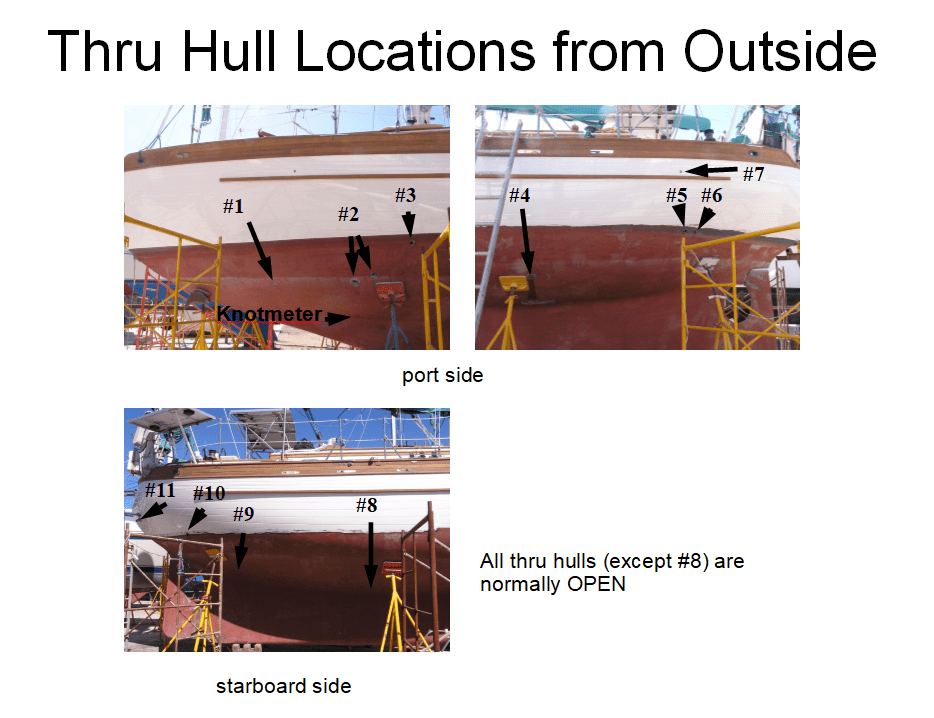If your boat started taking on water and you were not aboard, would anyone else have a clue where your thru-hulls are? Could they close them from the inside . . . or put plugs (or even stuff a t-shirt) from the outside?
Could they find the manual bilge pump?
If your boat was dragging, could they start the engine? Operate the windlass?
If you were sick, injured or — God forbid — found dead in your sleep, would anyone know who they should contact? Or how to?
No, we don’t like to think about these things happening. But they do.
Help the Helpers
Over the years, I’ve known quite a few boats that were lost at anchor when owners were ashore. While we all worry about what could happen at sea, I know far fewer that have been lost underway. But we spend so much more time anchored, moored or at a dock. So we need to think about being prepared for emergencies there . . . not just about having a ditch bag and life raft when at sea.
The thing is, the cruising community is incredibly helpful. If people see something bad starting to happen to a neighbor’s boat, they’re going to come investigate and do what they can to help.
But you have to make it so that they CAN help. Give them the info they need. It’ll only take a couple of hours to do this.
Emergency Info to Chart
Start with a layout of your boat. Mark the thru-hull locations and fuel shut-off points. This is the one I made for our former boat. It doesn’t have to be fancy — you can simply print a layout of your boat and use a pen or felt pen to mark locations. It’s more important to do it than to make it look pretty.

If you have pictures from a haul out, mark the thru-hulls on them. (If you don’t have such pictures, make a note to take them when you’re next hauled out.)

Then write up the important emergency info. If you’ve got 5 keys hanging up, be sure tell them how to identify the one for the engine. Remember that people won’t be thinking calmly in an emergency and they’re not familiar with your boat.

Get it all laminated (you can get easy, self-laminating sheets on Amazon) and post it on a wall in a conspicuous location. I know it may not be a great decorating choice, but someday it could save your boat. I also added info on the emergency SSB channels. If there are often people aboard who don’t know how to use the VHF, you could also include basic VHF info such as using channel 16 for emergencies and calling “MAYDAY.”

Total cost for this? Less than $5 and a couple hours of time. A lot less than the time and money spent on a ditch bag, flares and liferaft. And frankly, more likely to be used. Do it.
Related Posts

Quickly find anchorages, services, bridges, and more with our topic-focused, easy-to-use waterproof guides. Covering the ICW, Bahamas, Florida, and Chesapeake.
Explore All Guides

Carolyn Shearlock has lived aboard full-time for 17 years, splitting her time between a Tayana 37 monohull and a Gemini 105 catamaran. She’s cruised over 14,000 miles, from Pacific Mexico and Central America to Florida and the Bahamas, gaining firsthand experience with the joys and challenges of life on the water.
Through The Boat Galley, Carolyn has helped thousands of people explore, prepare for, and enjoy life afloat. She shares her expertise as an instructor at Cruisers University, in leading boating publications, and through her bestselling book, The Boat Galley Cookbook. She is passionate about helping others embark on their liveaboard journey—making life on the water simpler, safer, and more enjoyable.











Carolyn Shearlock says
Thank you!